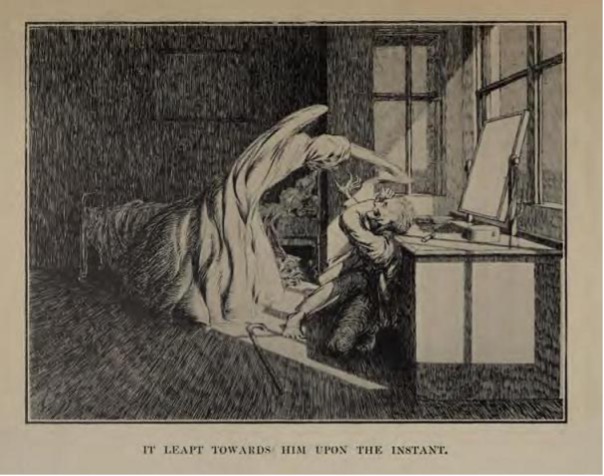Another intriguing update from the world of aphantasia.
The condition of aphantasia, or being unable to form visual imagery, is one the Back Page finds fascinating.
What’s it like not being able to see, or sort-of see, objects and creatures in your mind?
Is it a bit dull? We were shocked to learn that there’s a whole population who can’t enjoy M.R. James ghost stories, for example, because words just aren’t scary.

This James McBryde illustration for Oh Whistle and I’ll Come to You My Lad isn’t nearly as terrifying as what I see when I read the story.
There are also implications for memory, spatial navigation and language acquisition.
Now an Australian/French team has found the first physiological marker of aphantasia, one that doesn’t rely on self-report, simply by looking into a subject’s eyes when they’re asked to imagine something.
Everyone knows that pupils dilate and contract to differences in light, to optimise vision and protect the retina, but it was news to The Back Page that they also respond to imagined or expected brightness: a subject’s pupils contract when shown a picture of the sun more than one of the moon, and one study has shown a reponse to words alone, according to the authors.
They first measured subjects’ pupillary light response to imagery by showing them a real visual stimulus and then asking them to picture the same image, they tested the strength of the imagery using the binocular rivalry method. Pupillary response correlated positively with strength of imagery.
Then they tested 18 self-reportedly aphantasic subjects and found no pupil response during the imagery phase – except when they asked them to imagine four images at once, at which point the pupils reacted because of the higher cognitive demand (also an established phenomenon). This showed they were actually trying.
The authors suggest the correlation between imagery vividness and pupil response – and the lack of pupil response in aphantasics – is because the pupil responds “to imagined luminance in much the same way that it responds to retina-based light sources” and “that visual imagery functions much like a weak version of afferent perception”, but the exact mechanism is still uncertain.
They hope their work “may lead to the development of more congenial theories of the mind’s eye”.
If you see something congenial in your mind’s eye or otherwise, send it to penny@medicalrepublic.com.au


